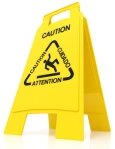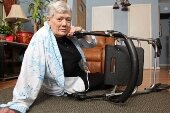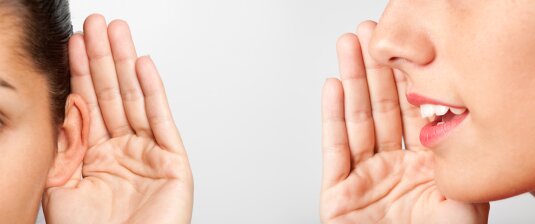Questions?
Background
Falls are all too common among older individuals living at home, and are often life-changing events that lead to severe injury, rehospitalization, loss of independence, and early death. According to the Centers for Disease Control and Prevention (CDC), one in three adults aged 65 and older experiences at least one fall each year, but less than half of them communicate this to a health professional.1 The CDC also reports that, among older adults, falls are the leading cause of fatal and nonfatal injuries, and contributed to more than 2 million emergency room visits in 2010.1,2
Fortunately, there is evidence to suggest that falls are not a normal part of aging and many falls are preventable in the older population. In January 2010, in an effort to expand fall prevention strategies in the home care setting, the Centers for Medicare & Medicaid Services (CMS) implemented an updated version of the Outcome and Assessment Information Set (OASIS-C) that incorporated fall-related process measures. Collection of these data has the potential for Medicare-certified agencies to track and reduce falls among vulnerable patients cared for at home.
References:
1. Centers for Disease Control and Prevention. Falls - Older Adults. http://www.cdc.gov/HomeandRecreationalSafety/Falls/adultfalls.html [online]. Accessed November 20, 2012
2. Centers for Disease Control and Prevention, National Center for Injury Prevention and Control. Web–based Injury Statistics Query and Reporting System (WISQARS) [online]. Accessed November 20, 2012
Geriatric Falls Prevention Toolkit
To help homecare professionals become more effective in reducing the number of falls experienced by their older patients, CHAMP selected and organized evidence-based tools from our Resource Library into this Geriatric Falls Prevention Toolkit.
This Toolkit contains:
-
Clinically-focused and validated tools to help you, and patients and their caregivers, identify patients at risk for falling
-
Intervention tools for homecare professionals, paraprofessionals, patients and their caregivers to facilitate the implementation of proven fall prevention strategies
-
Tools to help you, patients and caregivers communicate more effectively about risks for falls with other providers
-
Guidelines and evidence-based best practices to provide you with an overview of the evidence for reducing falls in older people
This Toolkit was designed to help you and your team members have quick and easy access to best practice tools to protect older patients from preventable falls. CHAMP aimed to include a comprehensive list of tools (mostly items in the public domain), so we do not expect individual users to want/need every item in the Toolkit. To download and print the tools individually, simply click on the name of the tool.
1. Evaluation and Screening Tools
For Homecare Professionals
Berg Balance Scale (BBS) - This tool to assess balance and fall risk among older patients scores a set of 14 simple balance-related tasks. The results are based on how long it takes your patients to complete the tasks and how well they perform them. It takes approximately 15-20 minutes to administer. (Click here to view a video demonstrating the use of this tool)
 Missouri Alliance for Home Care (MAHC-10) Fall Risk Assessment Form - Designed specifically for home care, this validated screening tool helps you evaluate fall risk for older patients. The MAHC-10 evaluates patients on 10 core areas of fall risk and scores of 4 or more indicate a risk for falling.
Missouri Alliance for Home Care (MAHC-10) Fall Risk Assessment Form - Designed specifically for home care, this validated screening tool helps you evaluate fall risk for older patients. The MAHC-10 evaluates patients on 10 core areas of fall risk and scores of 4 or more indicate a risk for falling.
The Falls Efficacy Scale - International (FES-I) - This short, easy-to-administer tool helps assess older patients' level of concern about falling during 16 specific activities. (Published in Try This, Issue 29 from the Hartford Institute for Geriatric Nursing.)
Timed Up and Go (TUG) Test - This simple home-based test helps identify frail elderly patients at risk of falling due to balance or gait problems. It takes 5 minutes or less to administer the test. (Click here to view a video that demonstrates the use of the TUG Test)
For Patients/Caregivers
My Falls-Free Plan: An Individual Falls Risk Assessment - This one-page checklist helps older adults to identify personal risk factors for falls and discuss these risks with their health care providers. It was developed by the Washington State Department of Heath, Injury & Violence Prevention Program.
2. Intervention Tools
For Homecare Professionals
Fall Prevention Medication Review Checklist - This simple checklist helps homecare professionals identify and eliminate medication side effects and interactions that increase the risk of falls. It provides space to note recommendations made or actions taken. (Source: Preventing Falls: How to Develop Community-based Fall Prevention Programs for Older Adults.)
Falls and Vision Loss Fact Sheet - This fact sheet for clinicians describes age-related vision diseases and how they hinder older patients' ability to safely negotiate their environment. It was developed for the Fall Prevention Center of Excellence.
The GEM Environmental Assessment - This comprehensive assessment tool helps identify safety problems in each room of a patient's home and possible modifications. (Developed by staff in the Division of Geriatrics and Gerontology at the Weill Medical College of Cornell University for Project GEM - Gerontologic Environmental Modifications.)
Orthostatic Hypotension Protocol - This brief protocol is helpful for educating clinicians about orthostatic hypotension (OH). It includes a table of commonly used groups of drugs that can cause or exacerbate this problem in older patients.
For Paraprofessionals
Fall Prevention Awareness: Enhanced Training for Home Health Aides - This training course was designed to help home health aides reduce falls by increasing their awareness of risk factors for common falls, and by enhancing their communication skills to address risks with their clients. The free curriculum is structured as two 4- hour workshops, but can also be taught as a full-day session. It was developed by PHI in partnership with the National Council on Aging (NCOA) with funding from the U.S. Department of Labor’s Employment and Training Administration.
Household Safety Checklist - This photo-illustrated checklist is designed for home health aides to do visual safety inspections in patients' homes. The 50-item checklist includes a variety of common environmental hazards, including falls, and, on average, takes 15 minutes or less to complete. (Developed as part of a training program designed by Dr. Robyn Gershon, a professor in the Division of Preventive Medicine and Public Health at the University of California San Francisco.)
For Patients/Caregivers
Catch Yourself: Simple Steps to Prevent Falls - This one-page fact sheet summarizes 3 important steps to help patients reduce their risk of falling (also available in Chinese, Korean, and Spanish). It was developed for the Fall Prevention Center of Excellence.
 Home Fall Prevention Checklist for Older Adults - This room-by-room checklist of common hazards for older patients helps make their home environment safer (also available in Chinese and Spanish). It was developed by the Centers for Disease Control and Prevention (CDC).
Home Fall Prevention Checklist for Older Adults - This room-by-room checklist of common hazards for older patients helps make their home environment safer (also available in Chinese and Spanish). It was developed by the Centers for Disease Control and Prevention (CDC).
Household Tips for People with Low Vision - This room-by-room guide provides safety tips for people with low vision to help them perform everyday tasks more easily, while reducing their risk of falling and other injuries. It includes a list of "Ten Action Steps" to help individuals get started. (Developed by staff in the Division of Geriatrics and Gerontology at the Weill Medical College of Cornell University.)
Improve Your Balance in 10 Minutes a Day - This patient handout provides three simple exercises patients can perform at home to improve their physical balance.
What YOU Can Do to Prevent Falls - This handout recommends four steps that patients should take to help prevent falls, including a checklist to make their home environment safer (also available in Chinese and Spanish). It was developed by the Centers for Disease Control and Prevention (CDC).
3. Communication Tools
For Homecare Professionals
Ask Me 3™ - This program helps foster effective communication with patients. It encourages patients to ask three simple questions during every medical encounter, and providers to answer them.
Review of the SBAR (Situation-Background-Assessment-Recommendation) Technique - This set of slides briefly summarizes SBAR, an easy-to-remember technique for communicating information that requires action (e.g., between a home care nurse and a physician about a particular patient condition or issue, such as fall risk).
 SBAR (Situation-Background-Assessment-Recommendation) Worksheet - This one-page worksheet summarizes the 4 steps of the SBAR technique. It can be printed and filled in to help plan a communication about fall risk or other patient safety issues.
SBAR (Situation-Background-Assessment-Recommendation) Worksheet - This one-page worksheet summarizes the 4 steps of the SBAR technique. It can be printed and filled in to help plan a communication about fall risk or other patient safety issues.
For Patients/Caregivers
Empowered Patient Coalition SBAR (Situation-Background-Assessment-Recommendation) Form - This version of the standardized SBAR communication tool was designed to help patients and their advocates relay vital information to health care professionals.
Falls: General Information - This simple handout helps educate older patients so they can determine if they are at risk for falls and, if so, how to decrease this risk.
Talk with Your Doc About Falls - This fact sheet for patients includes tips for talking to a healthcare provider about how to address their risk factors for falling (also available in Armenian, Chinese, Korean, Russian, and Spanish). It was developed for the Fall Prevention Center of Excellence.
4. Guidelines/Best Practices
AGS/BGS Clinical Practice Guideline: Prevention of Falls in Older Persons (2010) - This updated version of a 2001 guideline, aimed at preventing serious falls among older adults, includes recommended interventions to eliminate risk factors found in the home and prevent falls among older persons living in the community.
Best Practices Evidence Brief: Physical Function -This brief summarizes effective interventions that can help older individuals maximize their functioning, including progressive resistance training, varied exercise training and multifaceted programs to prevent falls. It was developed as part of a National Framework for Geriatric Home Care Excellence to inform improvement efforts in the homecare field.
National Institute for Clinical Excellence (NICE). Falls: The Assessment and Prevention of Falls in Older People (2004) - This clinical guideline on falls covers older people who live in the community, either at home, in a retirement complex, or in a residential or nursing home. The National Institute for Clinical Excellence (NICE) commissioned the National Collaborating Centre for Nursing and Supportive Care (NCC-NSC) to develop the guidelines.
To find more free falls prevention tools to use with your staff, your patients, and their caregivers, visit the CHAMP Tools page, type “falls” in the “Text Search” box and click “Search.”

